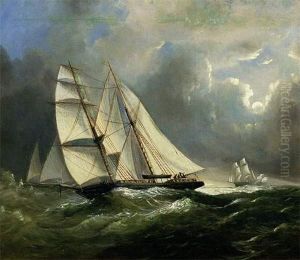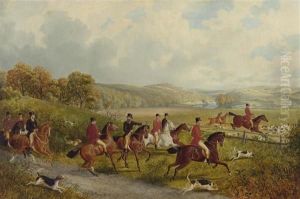Joseph Turner Keiley Paintings
Joseph Turner Keiley was an American photographer who played a significant role in the Pictorialist movement in the late 19th and early 20th centuries. Born on January 9, 1869, in New York City, Keiley became one of the close associates of Alfred Stieglitz, who was a central figure in the establishment of photography as a recognized art form.
Keiley began his exploration of photography in the early 1890s, and by the mid-1890s, he had developed a distinctive style that utilized soft focus, careful composition, and often allegorical or classical themes, which were characteristic of the Pictorialist approach. The Pictorialists sought to elevate photography to the status of fine art by emulating the emotional and aesthetic qualities of paintings and etchings.
In 1902, Keiley became one of the founding members of the Photo-Secession, a group established by Stieglitz with the goal of promoting photography as a legitimate art form separate from the commercial and technical aspects. Keiley's work was featured in many of the early exhibitions organized by the Photo-Secession and published in 'Camera Work', the influential photographic quarterly edited by Stieglitz. Keiley also served as the assistant editor for 'Camera Work' from 1903 to 1910.
Despite his success in the photographic community, Keiley never pursued photography as his primary career. He was trained as a lawyer and practiced law for a living. Nevertheless, his passion for the medium was evident in the quality of his prints and his writings on photographic aesthetics, which contributed to the theoretical underpinnings of Pictorialism.
Joseph Keiley's approach often involved hand-manipulation of the photographic print to create a unique image, a process that included techniques such as gum bichromate printing, which allowed for greater control over the final image and aligned the photographic process more closely with traditional art practices.
Tragically, Keiley's life and career were cut short when he died at the young age of 45 on January 17, 1914. Although his career spanned a relatively short period, his contributions to the art of photography and his role in the Photo-Secession movement left a lasting impact. Today, Keiley's work is recognized for its artistry and is included in the collections of major museums, continuing to inspire and influence the field of fine art photography.

